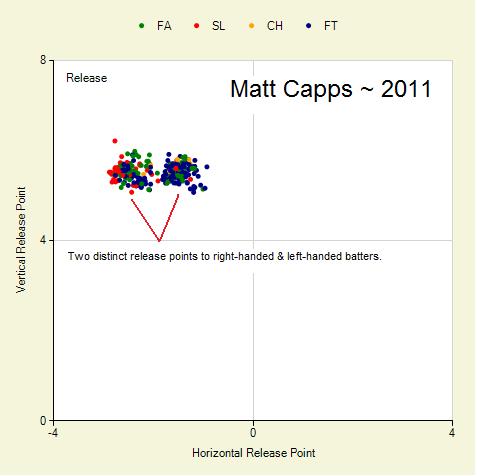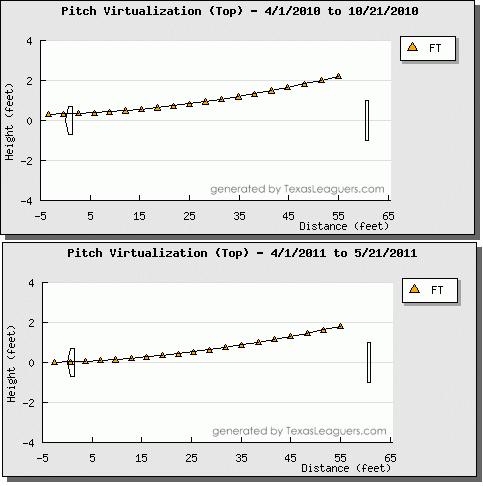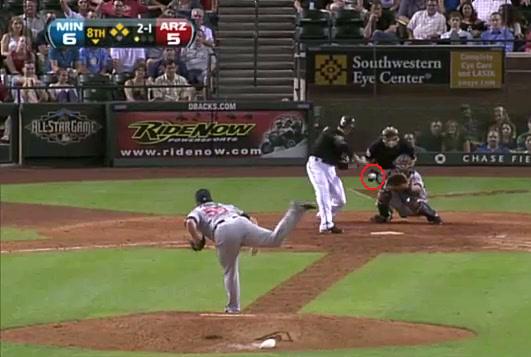Following what has become a common sight –
the Twins bullpen blowing a 5-run lead against the Angels on Friday night - the
Twins issued a statement saying that Francisco Liriano would be skipped in what
would have been his normally scheduled start on
Saturday due to a sore shoulder.
Before Monday’s game Joe
Christensen relayed some grim information regarding Liriano’s progress
saying:
“Liriano said his left shoulder did not feel well when he played catch before [Monday]'s game against the Tigers, so he will likely miss one more start, at least…Toward the end of batting practice today, Liriano was shagging balls in center field and having teammates throw the balls back toward the infield for him.”
So, after showing
some improvement in his more recent starts against Seattle and Arizona, Liriano
exits May
on the 15-day disabled list. The underlying tone of this move is that it should not signify anything more than a need to give Liriano the required rest
and provide Gardenhire with another option out in the ‘pen. Rather than move
forward with an already depleted bullpen since Anthony Swarzak has been tapped to fill
Liriano’s void for the time being, the Twins summoned reliever Anthony Slama
from Rochester to take Swarzak’s place. The Liriano transaction is retroactive
to May 23 so he could be ready to start again on June 6,
essentially bypassing his second consecutive start. He needed another start skipped and the Twins needed an arm. Simple as that.
Of course, while I say it shouldn’t signify
much of anything, there is plenty of evidence to make people wonder if there is
something more substantial happening with Liriano’s arm.
Liriano entered the season not in condition
to withstand the rigors of spring training. He matched that by being unable to
neither work ahead of hitters nor locate the strike zone on a regular basis
with his fastball when the regular season started. As I
outlined at the end of April, there were some indications that he was
releasing the ball differently than his previous season which may have had some
big influential factors on his overall command. On top of that, he
showed some decay in his velocity as well. Given those factors, it wasn’t
too hard to fathom some eventual visit to the disabled list for Liriano.
Back in February, when the Twins made it
clear they were not going to pursue a long-term contract with Liriano, I
was one of a handful of Twins bloggers that sided with the club on their
decision. To be sure, the stance went against the grain of all that I had
upheld as a statistically-oriented and data-driven individual, especially given
the fact that the team would have been able to get a team-friendly deal at that
point, but my research and video scouting led me to the same conclusion that
the Twins reached.
One of the biggest aspects of my findings
that stood out to me in terms of Liriano was this section:
“There is an on-going debate on whether or not throwing sliders takes a bigger toll on a pitcher’s arm versus the other assortment of pitches. One study conducted by Dr. James Andrews and Dr Glenn Fleisig (among others) found that there was no conclusive evidence that showed that a slider was any more or less damaging to a pitcher’s arm than a fastball, but they conceded that the small sample size gave no real insight to whether or not this is true. What they did find is that slider tends to have greater “shoulder proximal force than curveballs”. This is noteworthy because if a pitcher demonstrates improper timing in their mechanics and increases their shoulder proximal force, according to Andrews’s book “The Athlete’s Shoulder”, additional pressure is put on the bicep tendon-complex which increasingly leads to a SLAP lesion.”
So here we are two
months into the season and Liriano who, time and again, has been accused of
funky mechanics is now sidelined with a sore shoulder. Fortunately, the Twins
did perform an MRI which did not reveal any SLAP lesions. Their analysis came
back showing just slight inflammation with signs of tendinitis. Now it is
completely possible that this is a blip on the radar - which he has general
soreness and developed some tendinitis and the rest will heal him – but even tendinitis, which is common, has a funny way of lingering and disrupting performances.
For instance, Glen
Perkins had been diagnosed with tendinitis in July of 2009 and –
despite coming back in 2010 - he never really recovered his stuff until the
2011 season.
With their position
in the division, the Twins may have wanted Liriano to string together a few
more starts like the ones in Seattle or Arizona in order to increase his trade
value by the deadline. This injury combined with his lackluster performance could
dampers those plans. Certainly the hope is
that with the rest and some anti-inflammatory treatment he’ll be ready in a
week’s time, however, given the red flags throughout this season, there is a
part of me that wouldn’t be surprised if Liriano’s injury does not wind up more
extensive time on the DL before the year's end.












